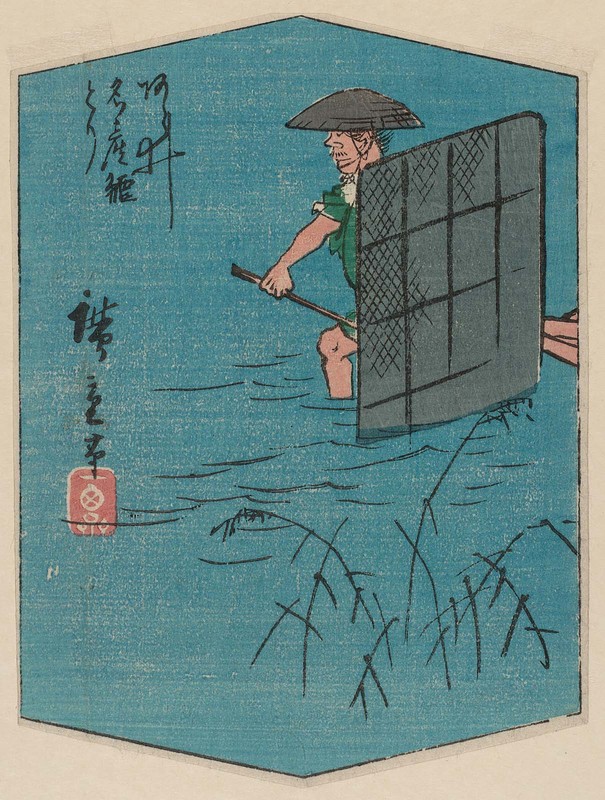Embellishing the Art
This is the oldest known gyotaku created by Masakuni, a fisherman. It is housed at the Fukuoka City Museum in the southern Japanese island Kyushu. Gyotaku was prevalent during the Edo Period in this region along the Sea of Japan.1
As the practice became noticed by feudal lords, the prints became more elaborative and were embellished with added colors and small details. Fishermen and artists began to sign their work with hanko, a signatory stamp that is usually done in red ink, to claim the piece as their own. Lord Sakai of the Tōhoku region was so invested in the art form, that he hired artist-fishermen to bring him the best prints they could create from the fish in the Sea of Japan.
With the fall of the Tokugawa Shogunate at the end of the Edo period and the rapid modernization that followed, gyotaku fell to the wayside, but lives on today in Japan and is appreciated by fishermen throughout the world as a creative way to preserve their prized catches.2
1. [http://museum.city.fukuoka.jp/exhibition/tsuri-douraku/midokoro.php]↩ 2. [http://ed.ted.com/lessons/gyotaku-the-ancient-japanese-art-of-printing-fish-k-erica-dodge#watch]↩

